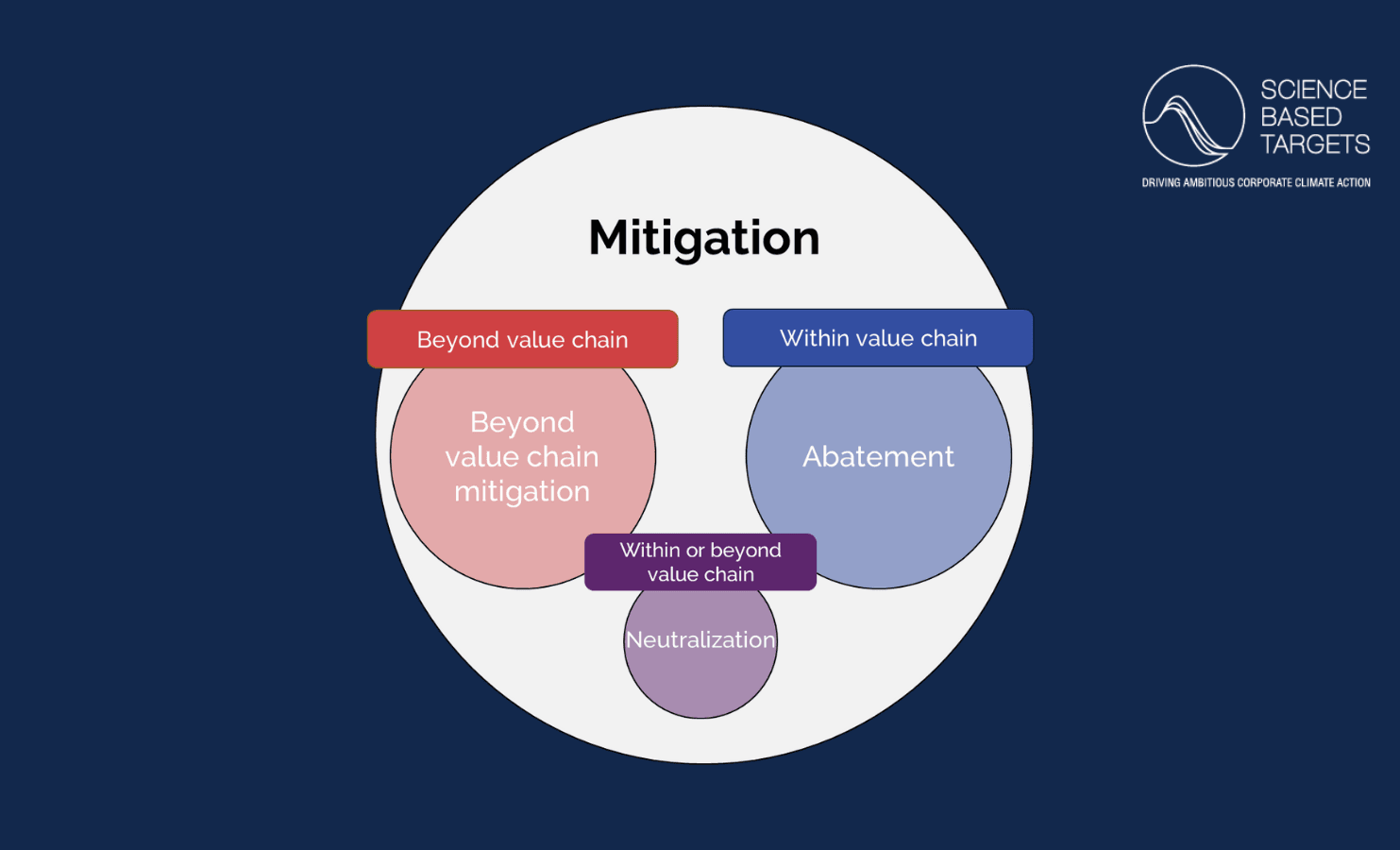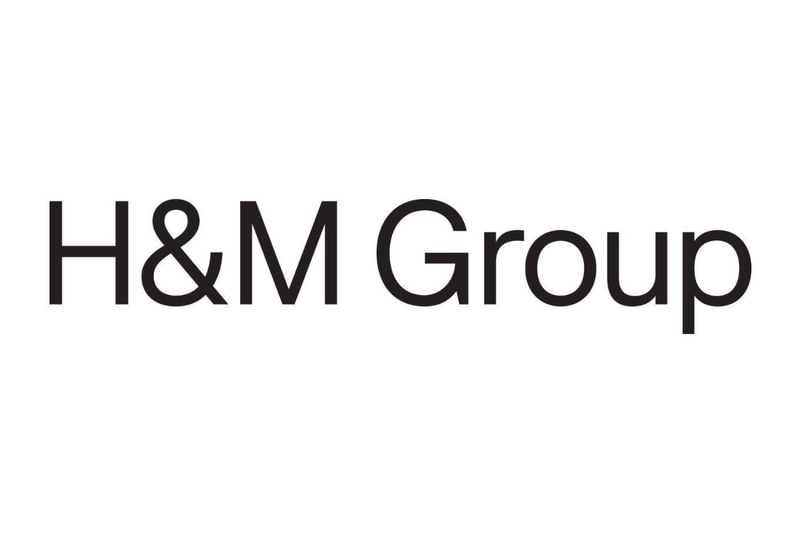
Going Above and Beyond to Contribute to Societal Net-Zero
Aug 31st 2022
In the first of a series of blogs, SBTi's Senior Net-Zero Manager Emma Watson shares the SBTi's plans to create guidance for beyond value chain mitigation.
The SBTi’s Net-Zero Standard is the world's leading science-based framework for setting corporate net-zero targets in line with 1.5°C. For companies to play their part in limiting dangerous climate change, the Standard sets out four key elements:
- Near-term science-based targets: Emission reduction plans for 5-10 years in line with 1.5°C.
- Long-term science-based targets: Most companies are required to cut emissions by at least 90% no later than 2050.
- Beyond value chain mitigation: Companies are expected to take action to mitigate emissions outside their value chains, such as purchasing high-quality, jurisdictional REDD+ credits or investing in direct air capture.
- Neutralize residual emissions: Remaining emissions, i.e. the final 10% or less, must be neutralized with permanent carbon removals.
To follow on from the Net-Zero Standard, the SBTi committed to creating guidance for the third element, beyond value chain mitigation (BVCM). The SBTi is now pleased to announce that we will publish a paper in 2023 to guide companies towards credibly supporting BVCM to contribute to societal net-zero.
In the meantime, we strongly recommend that all companies progress BVCM activities. To support this, some initial questions are answered below to provide more information. For a deeper dive on the topic, please visit our BVCM FAQ.
We will shortly publish another blog on “no-regrets" actions that companies can take whilst SBTi develops further guidance.
What is BVCM?
Science-based targets (SBTs) define the pace and scale of companies’ value chain (i.e. scope 1, 2 and 3) emission reductions in line with limiting global heating to 1.5°C.
“Beyond value chain mitigation” encompasses all investments and actions that a company takes beyond its SBTs to mitigate emissions outside of its value chain. Companies must continue to prioritize reducing absolute value chain emissions above other forms of mitigation. However, companies should also work to reduce emissions outside of their value chain.
The key related terms are visualized as a Venn diagram in Figure 1. This figure shows that BVCM, abatement and neutralization are all forms of mitigation, and that neutralization could occur both within and beyond the value chain.

Figure 1: A visualization of key terms to aid understanding of how they are connected.
Is BVCM limited to removals?
No, BVCM is not limited to removals. BVCM activities can avoid or reduce greenhouse gas emissions, or remove and store greenhouse gasses from the atmosphere.
What activities qualify at BVCM?
Some examples (not exhaustive) of BVCM actions and investments are:
Type of Action | Example |
|---|---|
Forestry | Jurisdictional REDD+ |
Conservation projects | Peatland or mangrove |
Energy efficiency | Cookstove projects |
Methane destruction | Landfill gas projects |
Renewable energy | Solar, wind, biogas, etc. |
Industrial gasses | N2O destruction at nitric acid facilities |
Scaling up CDR technologies | Direct air capture (DAC) and storage |
Support and Advocacy | Supporting R&D for new climate solutions, or organizations advocating for more ambitious climate policies |
Why should businesses undertake BVCM?
Since its inception in 2015, the SBTi has grown exponentially. Companies with science-based targets or commitments are now worth more than $38 trillion USD in global market capitalization.
Setting and achieving SBTs should be the main priority for these companies and financial institutions. However, not all organizations will set SBTs. And a large quantity of emissions fall outside of corporate value chains, so these targets alone will not be enough to achieve these goals.
Companies can help close the emissions gap between where we are today and where we need to be by carrying out additional BVCM activities. Urgently reducing value chain emissions and contributing to BVCM in combination will help reserve the remaining carbon budget that is continuously shrinking.
How does BVCM fit into SBTi requirements?
The principle at the heart of the SBTi Net-Zero Standard is the “mitigation hierarchy.” Under the mitigation hierarchy, companies should set both near and long-term SBTs on their value chain emissions and implement strategies to achieve these targets as a first order priority.
However, as shown by Figure 2 below, BVCM is expected to be the second step companies take after abatement of value chain emissions. This is because BVCM efforts should begin immediately, whereas neutralization is expected to ramp up as the company gets closer to reaching its net-zero targets.
Under the Net-Zero Standard, the SBTi expects all companies engaging in BVCM to annually report on the nature and scale of their BVCM involvement, including how much was spent and what the funds were used for.
Figure 2: The SBTi Mitigation Hierarchy
What work is the SBTi undertaking regarding BVCM?
The initiative worked with systems change company SYSTEMIQ to conduct further research on BVCM. This included a survey which the SBTi is using to further develop BVCM resources. The responses highlight the importance of clarifying BVCM terminology and definitions, showed strong support for companies to engage in BVCM actions, but received mixed responses as to how much BVCM should be required.
One area of clarity was the strong desire for the SBTi to play a leading role in providing guidance on high integrity and ambitious BVCM actions. To fulfill this need, the initiative plans to publish a paper on BVCM that will outline different models for BVCM and the incentives that drive them. Additionally, the SBTi plans to include key principles of BVCM, such as minimum disclosures for credibility and best practices for transparency.
Can the SBTi offer any advice for companies that are developing their BVCM strategies?
Recognizing the importance of the coming decade in addressing climate change, the SBTi recommends that companies prioritize near-term SBTs, followed by securing and enhancing carbon sinks (terrestrial, coastal, and marine, etc.) to avoid the emissions that arise from their degradation.
There is also a critical need for companies to invest in nascent GHG removal technologies (e.g., direct air capture (DAC) and storage) so that the technology is available to neutralize residual emissions at the long-term SBT date.
Stay tuned for our next blog on no-regrets actions that companies can take whilst the SBTi develops further guidance.
The SBTi is not prescribing how BVCM should be done, but acknowledges that it can take several forms. Without prejudice as to the BVCM guidance SBTi will develop in 2023, the analysis by SYSTEMiQ identified three broad options companies could potentially utilize when conducting BVCM.
Example models include:
Model | Description | Example |
Tonne for tonne | Purchase and retire high-quality carbon credits to match some portion of unabated and / or historical emissions. | Company X is on track to achieve its approved SBT and purchased carbon credits to match 100% of unabated emissions each year. |
Dollar for tonne | Companies implement an internal carbon tax to generate funds that are used to support effective climate projects, not limited to carbon credits. | Company X is on track to achieve its approved SBT and applies a $50 price to remaining carbon emissions and uses that to finance BVCM. |
Dollar for dollar | Companies set aside a share of revenue or profit and use that to support effective climate projects, not limited to carbon credits. | Company X is on track to achieve its approved SBT and invests 1.5% of profit into BVCM. |
As the SBTi continues to work on beyond value chain mitigation, are there useful resources that companies can refer to in the interim?
Until the SBTi releases further BVCM guidance, there are many other resources available for companies:
Beyond Science-Based Targets: A Blueprint For Corporate Action on Climate and Nature
The Oxford Principles for Net Zero Aligned Carbon Offsetting



